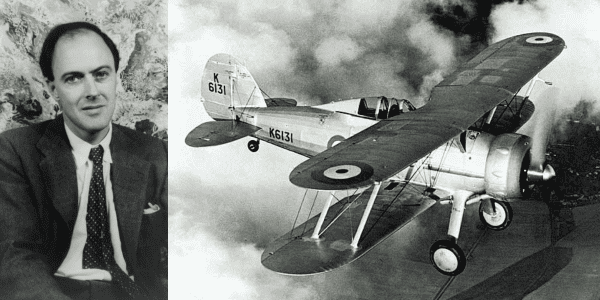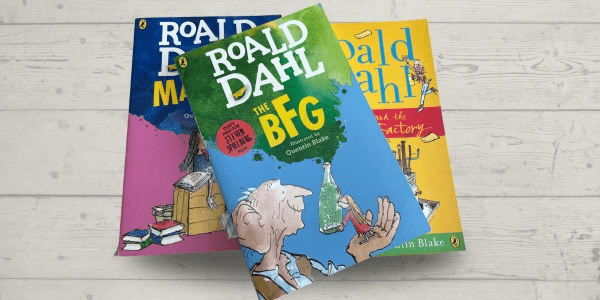When Quentin Blake met Roald Dahl
Now aged 90, illustrator and caricaturist Quentin Blake is best known for his unique drawings depicting the characters in author Roald Dahl’s famous children’s books.
Blake has helped bring to life Dahl’s imaginative and quirky tales for generations of children, after they struck up a creative partnership in 1976.
They had both worked with other people in the fiction writing industry, until their first meeting, almost half a century ago, led to a strong friendship, as well as a successful business relationship.
Prolific illustrator
Quentin Blake and Roald Dahl were both well-known in the world of children’s literature as individuals for many years.
Born in 1932, Blake developed his artistic skills during his school days at Chislehurst and Sidcup Grammar School.
The renowned painter and cartoonist, Alfred Jackson, was the brother-in-law of Blake’s Latin teacher. Jackson recognised Blake’s talent as a cartoonist and encouraged him to submit his work to Punch magazine. This resulted in Blake having his first cartoon published at the age of just 16.
A graduate of Downing College, Cambridge, he later studied at Chelsea School of Art and Camberwell College of Art. A teacher at the Royal College of Art in London for more than 20 years, he was head of the illustration department between 1978 and 1986.
He first illustrated a book in 1960, John Yeomen’s A Drink Of Water, which was the start of his successful career. This was followed by Evan Hunter’s The Wonderful Button in 1961. In total, he has illustrated more than 300 books in his quirky, easily recognisable, cartoon style.
War hero turned writer
Born in Cardiff in 1916, Dahl was only six when he met his idol, author Beatrix Potter, who wrote The Tale of Peter Rabbit.
Described as having a passion for literature, he was actually more interested in sports than academic studies at school. He played football, cricket, golf and squash and enjoyed reading, but this wasn’t a prolific writer in his youth.
After leaving school in 1934, Dahl enjoyed many adventures in Newfoundland, after crossing the Atlantic on RMS Nova Scotia, when he hiked with the Public Schools’ Exploring Society.
He served with the RAF during World War II, joining up in November 1939 and flying solo in a De Havilland Tiger Moth aircraft after only seven hours and 40 minutes’ experience as a pilot.
He survived a plane crash in September 1940 while attempting an emergency landing in a Gloster Gladiator. Despite fracturing his skull and breaking his nose, he managed to crawl away from the blazing wreckage of his aircraft.
After returning to active service in February 1941, he flew Hurricane planes into battle. However, he was eventually invalided out of the RAF after suffering headaches and blackouts as a result of his injuries.
A new career dawned! His first published book was A Piece of Cake, on 1st August 1942, which described his wartime adventures.
He became more famous for writing children’s fictional books, the first being The Gremlins, published in 1943, about mischievous little creatures. He went on to write 48 books, which have sold 300 million copies worldwide to date.
Among the most famous are Charlie and the Chocolate Factory, The BFG, George’s Marvellous Medicine, Matilda, The Witches and Fantastic Mr Fox. Several have been made into films.
The characters from Roald Dahl books were often based on people he had met in his youth. For example, inspiration for The Gremlins came from the RAF pilots he had flown with during the war, who blamed the aircrafts’ problems on “gremlins”.
First meeting
When Quentin Blake met Roald Dahl, their relationship began with a handshake in a publisher’s office in 1976. Dahl had already published six illustrated books, while Blake had worked with other authors.
Neither had a regular creative partner. The first book they worked on together was The Enormous Crocodile and the second was The Twits. In an interview, Blake said their interaction at first was “slight”. They tended to exchange messages but didn’t always see eye to eye on how the characters should look.
Blake described how one sequence of messages led to several different versions of Mr Twit’s beard. At one point, Dahl reminded Blake it should look like it “grew in spikes that stuck out straight – like the bristles of a nail brush”.
Eventually, Blake visited Dahl at his home, Gypsy House, in the Buckinghamshire village of Great Missenden. Blake saw Dahl interact with his family, including his granddaughter, Sophie. This gave the illustrator a “lightbulb” moment while drawing the characters in The BFG.
He identified a connection between Dahl and the title character, describing them both as “tall men who put dreams into children’s heads”. Initially, Blake had drawn the BFG as a comic clown, but he redesigned the character to have a more human element.
After this visit, a greater understanding was born between the author and illustrator, and they went on to become good friends.
Roald Dahl books illustrated by Quentin Blake became the norm and they struck up a hugely successful creative partnership. Blake described illustrating a book as being like directing a play. He said the script was there, but it could have various interpretations.
Lifelong friendship
The final book they worked on together was Esio Trot in 1990. Blake had no idea his friend’s death was imminent as they completed the project. They had become lifelong friends, with Dahl describing Blake as the “finest illustrator of children’s books in the world”. Sadly, just two months after finishing Esio Trot, Dahl passed away at the age of 74 from a rare form of blood cancer.
Both men have received many awards for their work, including the Good Book Guide’s Best Books of the Past 20 Years, which was presented to Dahl in 1997. Blake received the highest international accolade, the Hans Christian Andersen Award for Illustration, in 2002.
Following Dahl’s death, Blake worked on various other projects, including becoming an exhibition curator for the British Library and the National Gallery. He has also created large-scale illustrations for hospitals and healthcare premises in the UK and France, both on the wards and in public areas.
The duo managed to inspire the imagination of children all over the world, thanks to the amazing words and pictures they created. Dahl left a legacy for future generations that will never be forgotten.
Share this post
Tags
- Career Development
- Celebrity Meetings
- Conferences
- Confidence
- Exhibitions
- Historic Meetings
- How to Interview Effectively
- Human Resources
- In The Press
- Meetings and Conferences
- Monarchy
- News
- Our Team
- Personal Development
- Personnel
- Presentation Techniques
- Teamwork
- Top Tips for Meetings
- Training & Workshops
- Video Conferences





